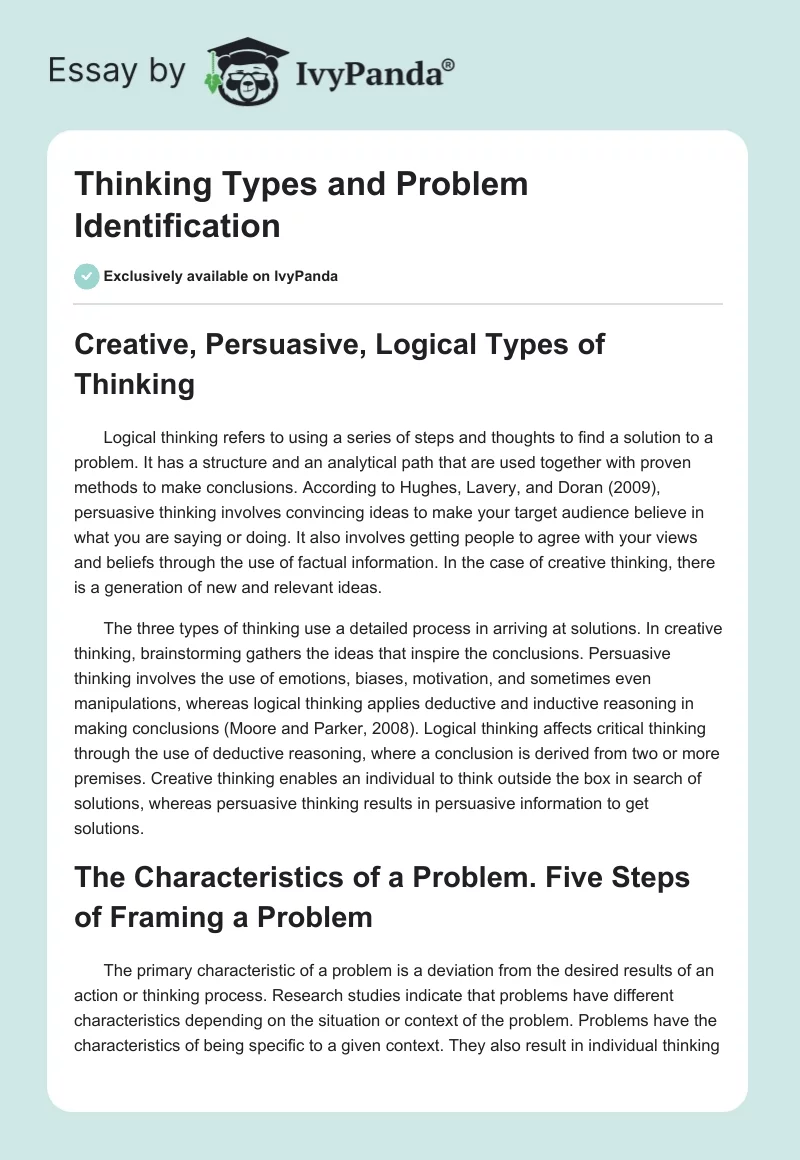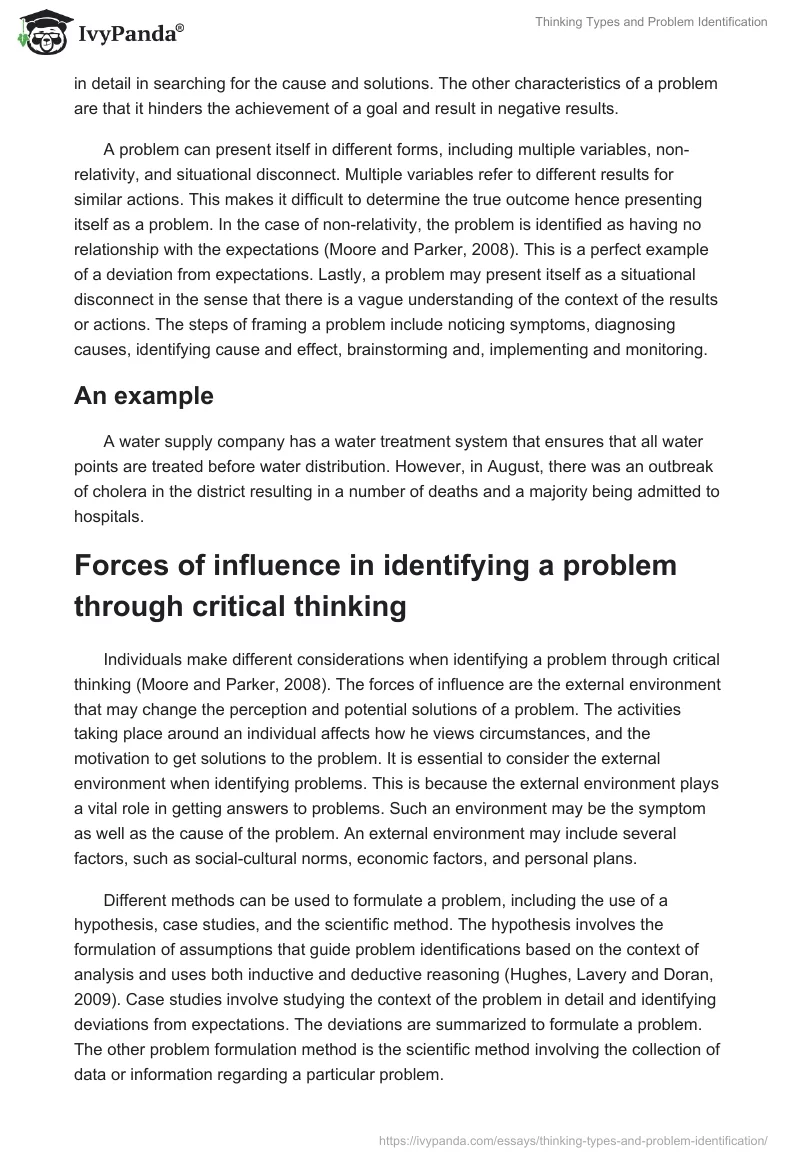Creative, Persuasive, Logical Types of Thinking
Logical thinking refers to using a series of steps and thoughts to find a solution to a problem. It has a structure and an analytical path that are used together with proven methods to make conclusions. According to Hughes, Lavery, and Doran (2009), persuasive thinking involves convincing ideas to make your target audience believe in what you are saying or doing. It also involves getting people to agree with your views and beliefs through the use of factual information. In the case of creative thinking, there is a generation of new and relevant ideas.
The three types of thinking use a detailed process in arriving at solutions. In creative thinking, brainstorming gathers the ideas that inspire the conclusions. Persuasive thinking involves the use of emotions, biases, motivation, and sometimes even manipulations, whereas logical thinking applies deductive and inductive reasoning in making conclusions (Moore and Parker, 2008). Logical thinking affects critical thinking through the use of deductive reasoning, where a conclusion is derived from two or more premises. Creative thinking enables an individual to think outside the box in search of solutions, whereas persuasive thinking results in persuasive information to get solutions.
The Characteristics of a Problem. Five Steps of Framing a Problem
The primary characteristic of a problem is a deviation from the desired results of an action or thinking process. Research studies indicate that problems have different characteristics depending on the situation or context of the problem. Problems have the characteristics of being specific to a given context. They also result in individual thinking in detail in searching for the cause and solutions. The other characteristics of a problem are that it hinders the achievement of a goal and result in negative results.
A problem can present itself in different forms, including multiple variables, non-relativity, and situational disconnect. Multiple variables refer to different results for similar actions. This makes it difficult to determine the true outcome hence presenting itself as a problem. In the case of non-relativity, the problem is identified as having no relationship with the expectations (Moore and Parker, 2008). This is a perfect example of a deviation from expectations. Lastly, a problem may present itself as a situational disconnect in the sense that there is a vague understanding of the context of the results or actions. The steps of framing a problem include noticing symptoms, diagnosing causes, identifying cause and effect, brainstorming and, implementing and monitoring.
An example
A water supply company has a water treatment system that ensures that all water points are treated before water distribution. However, in August, there was an outbreak of cholera in the district resulting in a number of deaths and a majority being admitted to hospitals.
Forces of influence in identifying a problem through critical thinking
Individuals make different considerations when identifying a problem through critical thinking (Moore and Parker, 2008). The forces of influence are the external environment that may change the perception and potential solutions of a problem. The activities taking place around an individual affects how he views circumstances, and the motivation to get solutions to the problem. It is essential to consider the external environment when identifying problems. This is because the external environment plays a vital role in getting answers to problems. Such an environment may be the symptom as well as the cause of the problem. An external environment may include several factors, such as social-cultural norms, economic factors, and personal plans.
Different methods can be used to formulate a problem, including the use of a hypothesis, case studies, and the scientific method. The hypothesis involves the formulation of assumptions that guide problem identifications based on the context of analysis and uses both inductive and deductive reasoning (Hughes, Lavery and Doran, 2009). Case studies involve studying the context of the problem in detail and identifying deviations from expectations. The deviations are summarized to formulate a problem. The other problem formulation method is the scientific method involving the collection of data or information regarding a particular problem.
An example
There are several possible causes of an increase in the number of highway accidents. One may consider the cause as poor road designs, reckless driving, or careless pedestrians. Formulating the problem may involve the use of a hypothesis where the three possible causes are considered. The causes may be reduced to reckless driving and poor road conditions.
References
Hughes, W., Lavery, J., & Doran, K. (2009). Critical Thinking: An Introduction to the Basic Skills. Chicago: Broadview Press.
Moore, N. B., & Parker, R. (2008). Critical Thinking. New York, NY: McGraw-Hill.


